Amazing glass homes
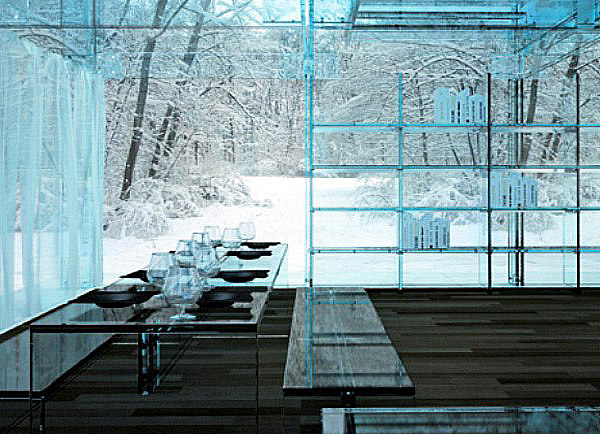 |
Almost everything inside this Milan, Italy home is made of glass. |
There are a few good rules of thumb to follow when owning and living in a house made of glass, and they don’t just involve throwing stones. Don’t play baseball in the front or backyard, don’t build a glass home near a golf course, and, most importantly, don’t forget to stock up on a supply of industrial-sized Windex—you’re going to need it.
Skyscraper architect Philip Johnson left a legacy of impressive buildings and skyscrapers, such as the Sony Building in Manhattan and Madrid’s improbably angled Puerta de Europa. But it’s his Glass House, in New Canaan, Connecticut, that is his most famous.
In Pictures: Amazing Glass Homes

“Sure, it’s just a box of clear glass in the woods, but that simplicity makes this 1949-era house stand out as particularly beautiful,” says Rich Beattie, executive online editor at Travel + Leisure.
Some glass abodes enjoy their wooded nooks, as the surrounding foliage allows for privacy, a notion with which all glass houses play. Case Study House #22 (also known as The Stahl House) takes a different approach, and, due to its location atop the mountains surrounding Los Angeles, opens itself up to the city skyline below. The home, designed by Pierre Koenig, was a product of Arts and Architecture magazine’s 1945 project to inspire famous building designers to create modern and affordable homes for G.I.s returning from the war.
Ultimately, the project was abandoned, deemed a utopian idea that ultimately proved impractical. It did, however, leave behind some beautiful “experiments.” Visitors are allowed to view the privately owned home on weekends.
As Philip Johnson designed his glass home, Mies van der Rohe was contemporaneously at work on his glass-walled Farnsworth House, situated outside Chicago. His work reportedly greatly influenced Johnson’s final vision. The resulting home, the Farnsworth House, located in Plano, Illinois, is located nearly 55 miles outside of the Windy City.
The single-room window retreat, reminiscent of Johnson’s style, and has become so famous and influential that it was named a National Historic Landmark. Originally commissioned by Dr. Edith Farnsworth, who worked with van der Rohe on the designed and approved the final plans, the home was eventually the subject of a lawsuit first brought by van der Rohe and later countered by Farnsworth. Rumor has it that it wasn’t the home that drew her litigious ire upon completion, but rather the souring of a relationship with van der Rohe.
Read on for more about the Farnsworth House and four other amazing glass homes:
Church Point Home
Location: Pittwater, Australia
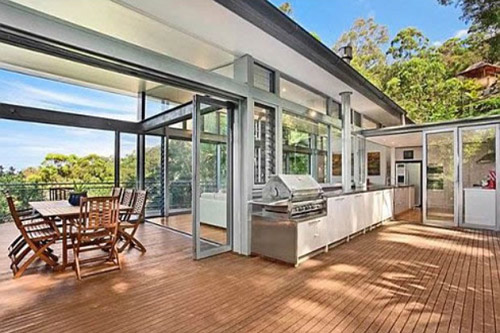 |
The Church Point Home, outside Sydney, resembles a tree house. |
This hill-perched transparent home plays peek-a-boo through the trees, but for the most part, rocks and foliage nestle it in complete privacy. Located near the ocean in Pittwater, about 30 miles north of Sydney, the Church Point Home was designed by Sydney architectural firm Utz Sanby. The firm describes the home on its website as a tree house that offers “seclusion and sanctuary” to its residents.
Concrete pillars made to look like trees support the house on its hillside seat, much like limbs act as a tree house’s supports, and though the home can seem muted with a majority grey-and-white color schemes small bursts of red strategically assert themselves inside and out. Hardwood floors and a wooden kitchen table set help harmonize the home with its forest location.
Philip Johnson's Glass House
Location: New Canaan, Connecticut
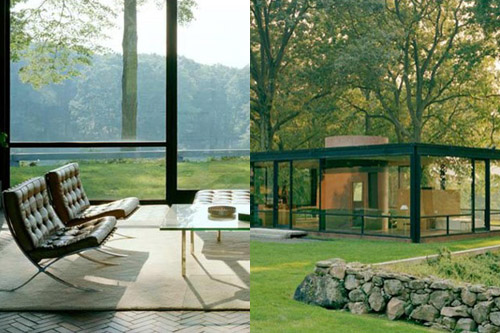 |
Johnson's home is surrounded by art that he and his partner collected. |
Used as the famous architect’s “Glass House Retreat” (he died there in 2005), the building was originally designed as a home. Johnson preferred to use it for the 58 years he lived after building it. Johnson’s lifelong partner, David Whitney, helped design the surrounding landscape and was responsible for collecting the art that the couple amassed. Thirteen other modernist buildings occupy the land, adding to the famous couple’s art collection.
Glass Home By Santambrogio
Location: Milano, Italy
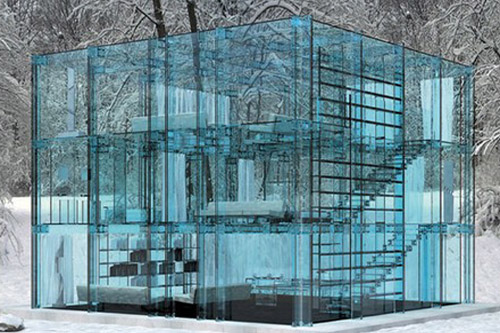 |
The Milan glass home is being replicated in Paris. |
If you have the funds, architect and glass designer Carlo Santambrogio will design for you almost any glass structure you can think of. But it is his Glass Concept Home, located in Milan, which is perhaps his most impressive architectural feat – one which is currently being replicated in Paris. A blue-tinged glass cube sits in the middle of a wooded clearing – a location private enough to reasonably place a home that is made almost entirely of 6 to 7 millimeter glass (the material can be specially heated during the winter).
“After the client requested it,” says Santambrogio, “I came up with the project idea.” Almost every feature or piece of furniture is made from glass as well, from the dining room table, to the stairs, to the bookcase. In fact, one of the few items not made of glass is the bed. Seems glass is just not comfortable to sleep on, even with a great comforter.
Case Study House #22 (The Stahl House)
Location: Los Angeles, California
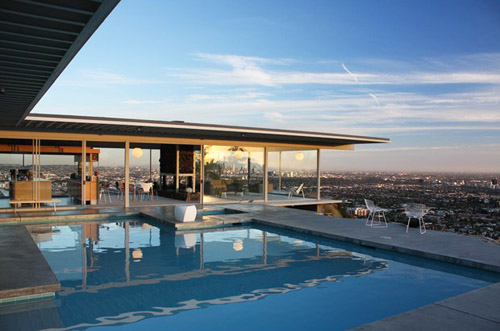 |
The Stahl home is the result of a post-World War II project. |
Arts and Architecture magazine had an inspired idea in 1945: to commission a variety of homes from some of the best architects of the day as a way of designing efficient and modern homes for troops returning from WWII. From 1945 – 1966 (with some gaps in between) a total of 25 homes were built (11 projects were never completed) and Case Study House #22 remains one of the most impressive.
Built on a cliffside overlooking the city, the home designed by Pierre Koenig, was completed in 1959, and the Stahl family, which still owns the home, moved in. Views from any area of the house (except for one wall facing the road, which provides privacy) take in the expanse of the whole valley, and guided tours of the home, while possible during the day, are most stunning at night. Tours are available and admission varies.
Farnsworth House
Location: Plano, Illinois
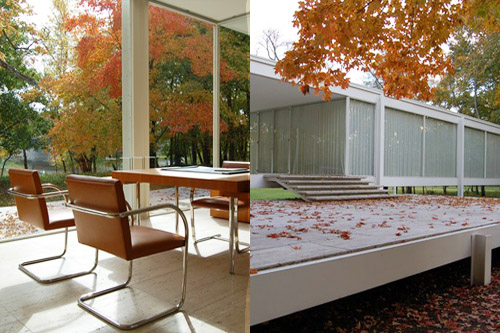 |
The Farnsworth House is a straight line of glass. |
Modernist German architect Ludwig Mies van der Rohe has had more influence on the architectural identity of Chicago than any other architect. The Farnsworth House, located 55 miles southwest of Chicago, is a fine example of his penchant for straight lines, steel and glass materials.
It was commissioned by Dr. Edith Farnsworth in 1945, who wanted to use the one-room glass shelter as a weekend retreat. Designated a National Historical Landmark in 2006, the Farnsworth house is essentially one large series of floor-to-ceiling mirrors, with a steel roof and support beams holding it in place. Today, the house and its grounds are now a popular backdrop for wedding ceremonies.

